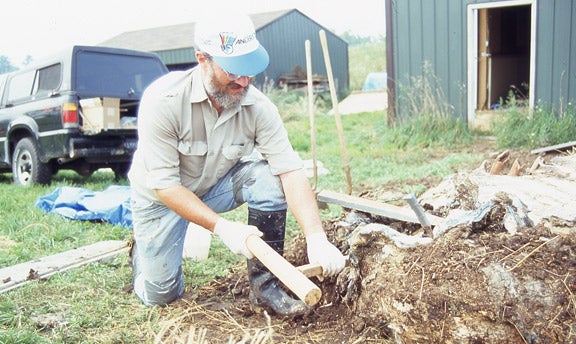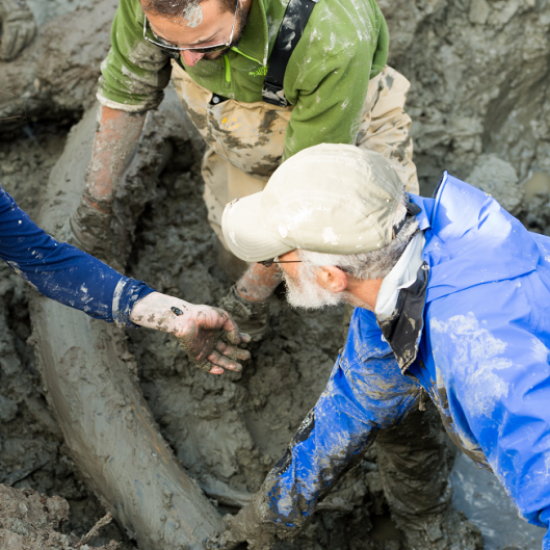On Friday, April 15, 2016, the U-M Museum of Natural History launched a fundraiser that will run until May 1—Tax Day to May Day—to raise $12,000 for a new exhibit featuring the Bristle mammoth, which was uncovered in fall 2015 on the farm of James Bristle near Chelsea, Michigan. The mammoth, which is estimated to be between 11,700 and 15,000 years old, was donated by Bristle to the University of Michigan. A new public exhibit is planned to display parts of the animal’s skeleton and provide the opportunity for members of the community to learn about mammoths and their interactions with ancient humans.
Dan Fisher, a professor of paleontology and the lead researcher on the Bristle mammoth team, tells us about the animal’s importance—and what he hopes the new exhibit will accomplish.
What type of mammoth was found on the Bristle farm?
As soon as we began to uncover the animal’s skull and tusks, we could tell from the size, shape, and orientation that this was neither a Columbian mammoth nor a woolly mammoth, which are the two main species of mammoths that we know lived in this part of the world. In fact, what we have here is a hybrid of the two!
This is very interesting, because the Columbian and woolly mammoths have always been considered separate species, but we have learned recently that they were able to interbreed. And that’s what we have discovered here—one of their hybrids.
What does the animal tell us about human-mammoth interactions?
We found evidence of human association with the Bristle mammoth. First, there is damage on the head, which we believe relates to human processing—to remove the brain and other skull tissues to eat. The skull is also broken open near the back of each tusk socket, and we also think this was to access the soft tissue at the growing end of the tusk.
Another interesting thing is that this animal was found in several different pieces on this site, which was originally a prehistoric pond. It suggests that humans butchered the animal and put it here for safekeeping. It turns out that when you put meat into a pond like this, the meat is colonized by bacteria that help to ferment and preserve it. This would have allowed the humans to come back and consume it later.
What implications could this mammoth have on our knowledge of humans in this part of the world?
If this mammoth turns out to be 15,000 years old, it would push back the documented presence of humans in this part of the world, showing that humans were here earlier than we originally believed. It also has the potential to tell us how humans may have played a part in animal extinction even then.
What are you hoping to accomplish with the new exhibit?
We have a few goals so far. We plan to create interactive 3-D digital models of selected mammoth bones, replicas of the tusks that visitors can view and touch, and programs for schoolchildren who visit the exhibit.
Please visit the Museum’s Crowdrise page for more information and to donate.

